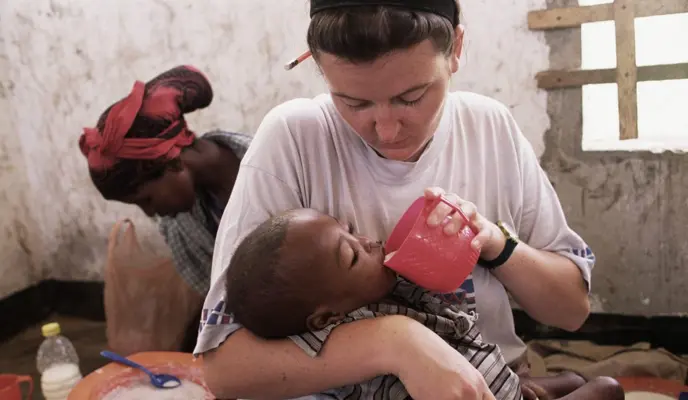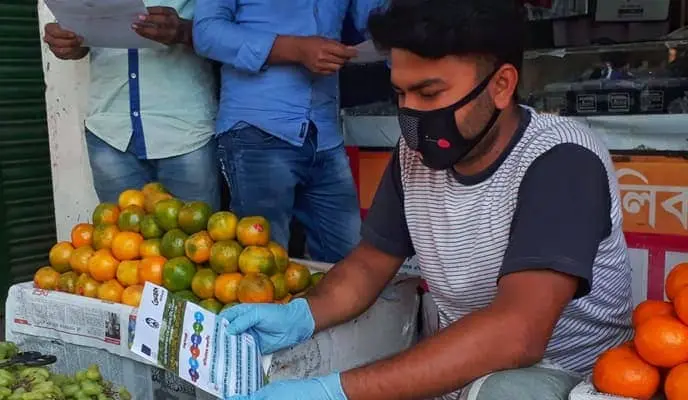There will be many lasting effects of the COVID-19 pandemic. One of them could be global hunger, even famine, on a scale not seen for decades.
One of humankind’s greatest achievements of the 20th century was the elimination of major famines. Yet too many people around the world still die of hunger — more than 20,000 every day — and the successes of recent years have started to slip away. Global hunger levels have been rising since 2015, with 135 million people now experiencing acute food insecurity, surviving only thanks to emergency food aid. Now, the United Nations warns that COVID-19 and hunger could create a crisis greater than the sum of its parts.

"We are talking about extreme conditions, emergency status."
World Food Program Chief, David Beasley, has warned that, as a result of this pandemic, the number of people facing acute food insecurity could almost double in just one year, to an estimated 265 million by the end of 2020. “We are not talking about people going to bed hungry,” he told the Guardian in an interview. “We are talking about extreme conditions, emergency status." He also predicted the possibility of multiple famines.
How the COVID-19 crisis could become a hunger crisis
The novel coronavirus pandemic is already affecting food supply and purchasing practices. Consumers stockpiling food supplies create a growing demand for dietary staples, putting pressure on global supply chains. At the same time, restrictions on trade and movement have reduced availability.
This means that those whose incomes are compromised by pandemic-related shutdowns and layoffs are going to struggle the most to afford enough food to keep their families healthy. For the majority of the extreme poor, if they don’t earn a daily income, they don’t eat.

Social distancing is a useful tool to flatten the curve and enable health systems to manage a pandemic. But, realistically, it's very difficult in communities where families live in confined spaces or areas that rely on informal labor.
If people are prevented from moving around to earn enough to buy food, with no alternative safety net, they will be pushed further into debt and the likelihood of hunger and malnutrition will increase.
Support the fight against COVID-19
With air travel suspended, tourism has ceased. The demand for fresh fruit and flowers grown in warm countries has plummeted, and in countries like Bangladesh, the livelihoods of garment workers are at risk as international retail chains pull billions of dollars of orders.
Another complicating factor for millions of people living in East Africa is the desert locust crisis. New swarms of these voracious pests are forming in Somalia, Ethiopia and Kenya and threaten to consume precious crops. Now, coronavirus restrictions are delaying the delivery of pesticides and equipment to control the locusts.
Help is getting harder to come by
While existing international aid budgets are protected for now, donor governments across the world are facing serious financial outlays in their domestic battles with COVID-19, leaving them to face some difficult choices.
"History will judge us on how we respond now."
There will likely be pressure to cut back on support for developing countries, but Concern Worldwide's Kirk Prichard warns that this would be a dangerous move. "Now, more than ever, we need to demonstrate collective solidarity — we are literally all in this together. The potential for catastrophe is huge, and history will judge us on how we respond now."

COVID-related unemployment in high and middle-income countries is already having a direct effect on poorer countries. The money that migrants and expatriate workers send home is a vital source of income for millions of families that far exceeds the monetary value of overseas aid. And that's starting to dry up, fast. the World Bank has predicted a 20% drop in remittances this year
Some payment companies have already seen an 80 to 90% drop in bank transfers to Africa. Aid agencies in Somalia say the impact is becoming obvious —a worrying sign for a country already facing food insecurity. Somalis know famine all too well.
For countries like Haiti, the poorest nation in the western hemisphere, remittances are hugely important. Haitians — as many as 700,000 of them living in the U.S. — sent over $30 billion to their home country last year. That’s nearly one third of Haiti’s GDP. Many work in sectors of the U.S. labor market that will be hardest hit by the effects of the pandemic.

In conflict-affected countries, the economic and social disruption of COVID-19 restrictions is a potential trigger for further conflict. Help will be harder to deliver. Shutting down systems and delaying or redirecting badly needed humanitarian services will impact on stability, increase violence, and make corruption more likely.
Beyond conflict and threats of violence, programs to reduce malnutrition and increase food security will also be interrupted or slowed down by the pandemic. Precious progress already made could quickly be lost.
A window of opportunity that's closing fast
The potential impact of COVID-19 on global hunger is overwhelming; trying to imagine what any of us can do to help is even more so. The short answer to what any individual or community can do is clear: do the extraordinary. In the words of David Beasley of the WFP, ” “We do not have time on our side, so let’s act wisely – and let’s act fast”.
"We must boldly demand from our leaders a global response."
According to Concern’s Colleen Kelly, we need to give in ways and at a scale that we have never given before. “We must boldly demand from our leaders a global response, one that supports solutions that evidence indicates will minimize the impact of COVID-19. We need to focuses practical measures — support small business and invest in nutrition and food security. And we need to continue delivering until the threat is over.”
